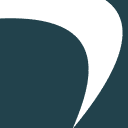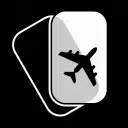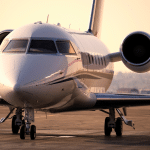WW2 Planes: The Aircraft and Jets of World War II
The aircraft of World War II were of critical importance in the evolution of jet-powered flight and, eventually, private jet charter flights. Aeronautical research from both Allied and Axis countries contributed greatly to the technology used for the air charters of today.
During World War II, many major battles took place in the skies of Europe and the Pacific. Germany, the United States, Italy, Great Britain, Japan, and the Soviet Union all developed WW2 planes in the hopes of gaining air superiority during the war.
While countries such as Great Britain, Germany, and the U.S. all made significant advances in terms of their fighter planes and WW2 aircraft in general, it was Germany that created the first turbojet aircraft. The first jet plane to make a successful flight, the Heinkel He 178, did so shortly before the official start of the war in September, 1939.
What were the main planes used in WW2?
Though plenty of bombers were used during the Second World War, the B-17, B-24, B-26, and B-29 were the most common. Here’s a deeper look at some of the jets used in WW2, including some of the most popular WW2 planes:
Arado Ar 234: The German-made Ar 234 was the first jet-propelled bomber aircraft. It first flew as a reconnaissance aircraft in 1944 at an altitude of 30,000 feet.
Bell P-59 Airacomet: The U.S. Army Air Forces began planning for a jet aircraft in 1941. These discussions resulted in the production of the Airacomet, which first flew in 1942.
Its tendency to sway while in flight made it impractical as a WW2 jet fighter, and the Army Air Forces (predecessor of the modern Air Force) eventually canceled the project. The P-59 had a top speed of 413 miles per hour and a service ceiling of 46,200 feet.
Bell XP-83: Bell Aircraft built the XP-83 in response to an Army Air Forces request for a more fuel-efficient fighter. Its first flight came in February of 1945.
This WW2 plane had a maximum speed of 522 miles per hour and could fly as high as 45,000 feet. The project was canceled in 1947.
Campini-Caproni N.1: The Campini Caproni CC2, aka the Campini-Caproni N.1, was the first jet produced by Italy and the second ever made. It had its first flight in 1940 and reached an altitude of 13,300 feet at a top speed of 223 miles per hour.
Consolidated Vultee XP-81: Consolidated Vultee Aircraft Corporation built the XP-81 to provide a WW2 aircraft in the escort fighter role. It used both a jet engine and a turboprop engine for propulsion. Its first flight came in 1945, and only two were produced, as the project was canceled at the end of World War II.
De Havilland Vampire F.1: The United Kingdom developed the Vampire F.1 to serve as a WW2 fighter jet. Its first flight came in 1943, and it went into service in 1946. The Sea Vampire variant was the first jet designed to launch from and land on an aircraft carrier.
Douglas XB-43 Jetmaster: The Jetmaster was the first jet bomber produced for the United States, although it entered service in 1946, after the end of World War II. Its top speed was 507 miles per hour, with a maximum altitude of 38,500 feet.
Douglas XBTD-2 Destroyer: This variant of the Douglas BTD Destroyer flew for the U.S. Army Air Forces and used a turbojet engine. These WW2 planes performed poorly as a torpedo bomber, and only two were made.
Fieseler Fi 103R Reichenberg: Germany built the Fi 103R to serve as a manned V-1. It was considered a suicide aircraft because of the low likelihood that the pilot would survive. The Reichenberg was launched from another aircraft, and its purpose was to crash into a target. It never saw service during wartime.
Gloster E.28/39: The Gloster E.28/39 was the first WW2 jet aircraft to fly for the United Kingdom. Its first flight was in 1941, and its maximum speed was 370 miles per hour. Two were built, and one survived the war; it is on display at London’s Science Museum.
Gloster Meteor F.1 and F.3: The Gloster Meteor, built in the United Kingdom, was the first jet aircraft to fly for the Allies in World War II. These WW2 planes flew for the first time in January of 1944, and the F.3 flew in August of the same year.
They were replaced by the Meteor F.4 in 1945. The Gloster Meteor succeeded in shooting down a V-1 in August of 1944.
Heinkel He 162: The World War II German volksjäger, or “People’s Fighter,” the Heinkel He 162 was a jet fighter that first flew in 1944. Also called the “Salamander,” its top speed was 491 miles per hour, and it flew as high as 39,400 feet.
Heinkel He 178: Before the start of World War II, Germany produced the world’s first jet aircraft that took to the skies, the Heinkel He 178 . It took flight for the first time in 1939 and reached a top speed of more than 400 miles per hour.
Heinkel He 280: Germany’s Heinkel He 280 was the first fighter plane in the world to be propelled by a turbojet engine. It first flew in 1940 and had a top speed of 559 miles per hour, with a maximum altitude of 37,730 feet. Germany produced a total of nine of these WW2 aircraft.
Henschel Hs 132: Germany built four prototypes of the Henschel Hs 132 jet-powered dive bomber. At that point, the Soviet Union’s forces captured the factory where it was under production. It was designed for a maximum speed of 484 miles per hour, but it never saw service due to the Soviet invasion.
Horten Ho 229: This German WW2 fighter-bomber was shaped like a flying wing and was intended to have stealth characteristics. The Ho 229 first flew with its jet engine in December of 1944.
However, it suffered a malfunction and a fatal crash in 1945. The United States captured the V3 variant in an effort to prevent the Soviets from getting the technology
What was the scariest plane in WW2? The Junkers Ju 287, also known as the “Stuka,” is considered the scariest due to its fearsome siren.
Junkers Ju 287: Two of these bomber aircraft were built by Germany, the first of which flew in 1944. It had a unique swept-wing design. This means the wings angled forward rather than to the rear or straight out to the side.
This WW2 plane used a fixed landing gear and reached a top speed of 487 miles per hour. The construction site was captured by the Soviet army.
Lockheed P-80 Shooting Star: This American aircraft was built in 143 days and reached a top speed of 600 miles per hour. Its first flight was in 1944.
It did not see battle in World War II. However, it served admirably in the Korean War, scoring the first jet-versus-jet kill in a dogfight with a North Korean MiG-15.
McDonnell FD Phantom: Built by McDonnell Aircraft, the FD Phantom first flew in 1945. It was America’s first WW2 jet-powered aircraft to make aircraft carrier landings. Its top speed was 505 miles per hour, and it flew at a maximum height of 43,000 feet.
Messerschmitt Me 262: This German jet fighter first flew in 1942 and went into combat in 1944. It was ultimately responsible for shooting down hundreds of Allied WW2 aircraft, primarily bombers.
Its maximum speed was 540 miles per hour, and it could fly as high as 38,000 feet.
Messerschmitt Me 328: This German jet aircraft was a parasite fighter, which meant that it was launched by another aircraft.
It was found to be unsuitable as a fighter. Other roles were then sought out for it, including as a suicide bomber. Its first flight occurred in 1943, and its maximum speed was intended to be 248 miles per hour.
Messerschmitt P.1101: This aircraft was designed in response to Germany’s Emergency Fighter Competition, but it never flew as a WW2 plane. It was meant to fly at speeds close to Mach 1, and it was made to carry air-to-air missiles.
The design also called for the ability to reposition its wings at variable angles. American forces captured the prototype in 1945. It provided the inspiration for the Bell X-5, which was able to vary its wing configuration while flying.
Mikoyan-Gurevich I-250/MiG-13: The Russian-made MiG-13, also called the I-250, was a jet fighter that first flew in 1945. It was abandoned in 1948. It reached a maximum speed of 512 miles per hour and used both a propeller system and a jet engine.
Mitsubishi J8M: Japan paid a large sum of money to license the rights to the German Me 163 WW2 jet fighter. The result of this was the Japanese J8M Shusui fighter aircraft.
It first took flight in 1944 but crashed in 1945 due to a mid-flight stall. The J8M was for the Japanese Navy, and the Army version was the Ki-200.
Nakajima Kikka: This Japanese jet aircraft was intended to be a fighter, interceptor, and bomber. It had foldable wings for compact storage, and its first flight occurred in August of 1945.
It never saw service as a WW2 fighter jet due to the war ending shortly afterward. It was intended to fly as fast as 432 miles per hour.
Northrop XP-79B (PDF): The XP-79B was a flying wing jet-powered interceptor that first flew in 1945. Its pilot would lay prone in order to better withstand G-forces at high speeds. Only one of these aircraft was ever built, and it suffered a fatal crash during testing.

P-51 Mustang: If you’re wondering, “what was the most famous plane in WW2?” the answer is the P-51. Roughly 1,500 Mustangs were used by the RAF in Europe.
Toward the end of the war, these popular WW2 aircraft were produced under license in Australia. It’s so popular that Top Gun actor Tom Cruise purchased a P-51 for his personal aircraft collection.
Ryan FR Fireball: Ryan Aeronautical produced the FR Fireball as a carrier-based fighter for the U.S. Navy. Though it first flew in 1944, it never saw combat.
This WW2 jet project was retired in 1947. It used both a propeller engine and a jet engine for propulsion, with a maximum flight altitude of 43,100 feet and a top speed of 426 miles per hour.
Sukhoi Su-5: This Soviet-era jet aircraft was designed as a fighter and used both a piston propeller engine and a jet engine. The Su-5 suffered a number of setbacks, including the lack of an available replacement engine when the first one broke up in flight. The project was canceled in 1946.
Yokosuka MXY7 Model 22: The Yokosuka MXY7 “Cherry Blossom” 22 was a suicide rocket-powered aircraft. It served as a human-guided missile during the final months of World War II. The earlier Model 11 was used in combat, but the war ended before Japan could deploy the updated Model 22 version.
Additional Information on World War II Planes
For the history buffs interested in WW2 planes and everything else that happened during this time, here are some facts of note and sources for additional reading.
- The Development of Jet Engines During the War: History fans interested in learning about the use of WW2 planes will find interesting information on Stanford’s World War II page. It talks about German designer Hans von Ohain and his pioneering contributions to the design of jet engines.
- Chronology of the Second World War: Visit the Veterans Affairs Canada website to see a timeline of the events that occurred in World War II from the perspective of Canada.
- Timeline of World War II: Go here to read a global look at the timeline of World War II, starting with the appointment of Hitler as chancellor of Germany.
- The Atomic Bomb and the End of World War II: Read about the use of the atomic bomb against Japan on this page from George Washington University. Pictures of the two bombs used to end World War II and information about the Manhattan Project are included here.
- World War II Submarine Warfare: Submarines were an important part of the war effort in the Pacific. Visit this page for information about how submarines affected the course of the war against Japan.
- Tuskegee Airmen Chronology (PDF): This Tuskegee University document is a historical timeline about the service of African-American pilots in a special program during World War II.
- Liberty Ships and Victory Ships, America’s Lifeline in War: Go here to read about the ships that helped transport troops and supplies to Allied forces during World War II. A table of contents directs readers to photographs and other pages with facts about these transport ships.
WW2 Planes Frequently Asked Questions
What was the rarest plane from WW2? The Blohm & Voss BV 141 is considered one of the rarest WW2 planes. This unique aircraft had an asymmetrical layout, placing the crew on the starboard side of the aircraft while the port side held the powerplant and tail unit.
What was the weakest WW2 plane? Considered one of the worst aircraft of WW2, the Bachem Ba 349 was an idea that never quite worked right. The original concept for this aircraft was a vertical launching system and glide to a landing. Unfortunately, the first flight was unsuccessful and the design never really took off.
What was the most feared WW2 plane? The B-29 is considered one of the deadliest jets used in WW2. It could carry six tons of bombs more than 3,000 miles and obliterate its targets.
It’s also the aircraft that carried the Hiroshima and Nagasaki atomic bombs. These WW2 fighter jets were also equipped with 12 .50 caliber turrets, 2 .50 BMG, and 1 20mm cannon.
If you’re looking to book a jet charter in a newer aircraft that wasn’t used in WW2, reach out to one of our private flight advisors for a free quote today. With nearly 20 years of experience in the private aviation industry, we can get you wheels up in one of the safest, most reliable aircraft available.
Are you ready to book your Miami to Nassau charter flight yet?
Our friendly, expert air charter agents are here to answer questions or start your quote today. Don`t wait, call now and we'll get you on your way to your destination!
Call 888-593-9066











